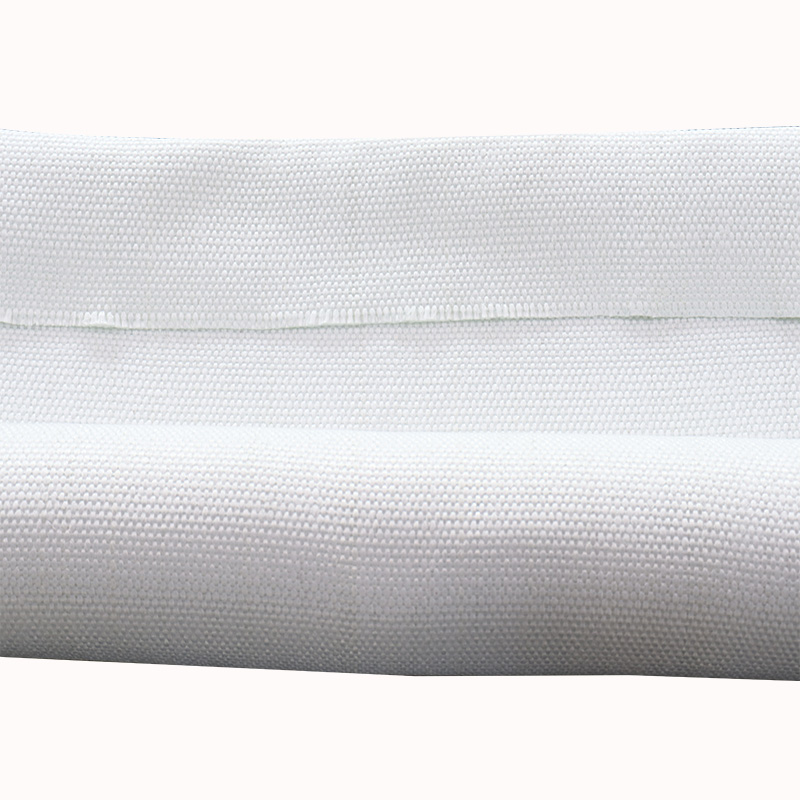High-Temperature Resistance and Fireproofing: Fiberglass Fabric’s Safety Barrier
In environments with extreme temperatures and potential fire hazards, fiberglass fabric establishes a robust safety barrier with its exceptional thermal and fire-resistant properties. This material has an extremely high melting point; it will not burn or melt under direct flame, and instead, it maintains its structural integrity for extended periods, effectively preventing the spread of fire. It can withstand temperatures ranging from hundreds to even thousands of degrees Celsius, making it a common material for manufacturing fire blankets, fire curtains, thermal pads, and various high-temperature protective garments. In industrial settings, such as steel mills, chemical plants, and welding operations, fiberglass fabric’s protective covers and insulation layers shield equipment and personnel from intense heat, significantly mitigating the risk of accidents. Its non-combustible nature makes it an indispensable fire-retardant material in architecture, shipbuilding, and aerospace, providing a strong guarantee for the safety of life and property.
Exterior Wall Insulation: A Key Player in Building Energy Efficiency
As global attention to building energy efficiency grows, the role of fiberglass mesh fabric in exterior wall insulation systems has become increasingly prominent. As a vital reinforcement material, it is embedded within the plastering mortar of the insulation layer, creating a continuous and durable “skeleton.” This framework effectively resists external stresses, such as temperature fluctuations, wind pressure, and minor mechanical impacts, thereby preventing cracks and delamination in the plaster layer. This reinforcement significantly enhances the overall stability and durability of the exterior wall insulation system, ensuring its long-term performance. The lightweight, flexible, and corrosion-resistant nature of fiberglass mesh fabric allows it to perfectly conform to a variety of complex building facades, ensuring ease and effectiveness of construction. By providing this stable support, the exterior wall insulation system can continue to perform its thermal barrier function efficiently, reducing building energy consumption and making a significant contribution to achieving green building goals.
Composite Materials: The Perfect Fusion of Lightweight Strength
Fiberglass fabric serves as the core reinforcement for manufacturing high-performance composite materials, achieving a perfect fusion of lightweight design and exceptional strength. By combining with a resin matrix (such as epoxy or polyester resin), the fiberglass fabric imparts superior mechanical properties to the composite, including incredibly high tensile strength, flexural strength, and impact resistance. These composite materials are much lighter than metals of the same volume, yet they are just as strong, if not stronger. As a result, they are widely used in fields that demand strict lightweight and high-strength requirements, such as aerospace, automotive, wind turbine blades, and sports equipment. For instance, in aircraft manufacturing, using fiberglass composites can significantly reduce the fuselage weight, leading to lower fuel consumption. In the wind power industry, large blades made from this material can more efficiently capture wind energy. As a reinforcement material, fiberglass fabric provides a solid foundation for the development of these cutting-edge technologies, driving innovation across various sectors.
Insulation and Thermal Resistance: The Unseen Guardian of Industry and Daily Life
The outstanding electrical and thermal insulation properties of fiberglass fabric make it the “unseen guardian” of the power, electronics, and home appliance industries. Since glass fiber itself is non-conductive, the fabric made from it can effectively isolate electrical currents, providing reliable electrical insulation for circuit boards and cables, thus preventing short circuits and electrical leakage. In terms of thermal insulation, the low thermal conductivity of fiberglass fabric makes it a highly efficient heat-blocking material. It can effectively prevent heat transfer, whether it’s the escape of heat from a high-temperature furnace or the loss of coolness from air-conditioning ducts. This material is used to create insulation layers in home appliances like ovens and water heaters, which not only ensures the proper function of the equipment but also improves energy efficiency and protects users from hot surfaces. With its silent yet powerful functions, fiberglass fabric provides a dual guarantee of safety and comfort for both industrial production and our daily lives.
Reinforcement: Empowering Cement with More Possibilities
In addition to its use in composite materials, fiberglass fabric is also widely used as a reinforcing agent for cementitious materials, giving traditional cement new possibilities. Conventional concrete or cement products are prone to cracking due to shrinkage, temperature changes, or external stress, which affects their structural integrity and service life. When fiberglass mesh or chopped fibers are mixed into or laid over cement mortar, they form a three-dimensional or two-dimensional fibrous network that, like steel rebar, disperses and absorbs stress. This significantly enhances the material’s crack resistance, tensile strength, and impact resistance. This type of reinforced cementitious material is often used in prefabricated components, GRC (Glass Fiber Reinforced Concrete) decorative elements, and specialized repair mortars. In this way, fiberglass fabric not only extends the service life of cement products but also broadens their application range, enabling them to meet more demanding design and performance requirements, and bringing new vitality to the fields of architecture and civil engineering.

